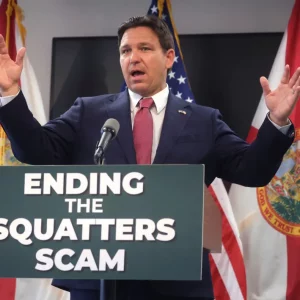Double tap. Click subscribe. Retweet.
In 2010 Instagram was established. With it emerged the influencer. Influencers are public figures that exert influence on the habits and commercial choices of their followers through their social media platforms. They do so by publicizing their purchasing choices, recommendations and opinions on these accounts. Users have come to look to these social media mavens for advice, knowledge and trend recognition.
The most prominent influencers boast hundreds of millions of followers across various virtual platforms. They have immense authority to drive markets and an unprecedented power over companies. When Kylie Jenner expressed a lack of interest in Snapchat earlier this year, the app’s value fell by $1.3 billion overnight. A Google survey found that 60 percent of Youtube subscribers would follow advice on what to purchase from influencers over that of their favorite celebrities. The lesson is clear: influencers matter. Companies have listened.
75 percent of brands use influencers to market their products. Compensation varies directly with follower count—a brand might dish out thousands of dollars to be featured on a major influencer’s social media page and reach millions of people.
Followers rely on influencers for relatable content and perceived authenticity. Influencers have no traditional claim to fame; they are not actors, writers or musicians. Instead, they are famous simply for their personalities and frankness. New knowledge of malpractice in the industry has rendered their authenticity questionable.
The influencer industry is poised for revolution. Enter the micro-influencer.
A DIFFERENT KIND OF CELEBRITY
“How do you feel about Instagirls?” Meredith Vieira asked Naomi Campbell in a 2015 interview, referring to the new generation of public figures who use online platforms like Instagram to build their careers.
Campbell was skeptical about their longevity, issuing a damning prediction: “easy come, easy go.”
Not quite.
Four years on from Campbell’s pronouncement, Kylie Jenner, perhaps the most famous ‘Instagirl’ is projected to become the world’s youngest ‘self-made’ billionaire at 21. Kylie Cosmetics, famous for its highly coveted lip kits, was established in November 2015 to massive attention. Today, the company is worth an estimated $800 million. Jenner’s success is staggering, but it is not surprising. She and her ilk are the new vanguard, who have ushered marketing and branding to a new dawn: the age of influencers.
CELEBS, THEY’RE JUST LIKE US…
…until they’re not. Consumers are mindful of the discrepancy between the lifestyle of a celebrity and that of an average customer . As a result, celebrity endorsement can be met with skepticism. In 2016, Kevin Hart starred in a Hyundai Genesis commercial. The comedian’s endorsement is unrealistic in the face of his luxury car collection; Kevin Hart doesn’t drive a Hyundai off screen, he owns 2 Ferraris. If traditional celebrity endorsement is captivating, it is also distant.
Influencers bridge the gap between ‘normal’ people and superstars; they code switch between the glamorous and the mundane. They are exposed to exciting opportunities and brand deals, but interact with companies as representatives of ‘regular people’. Fans follow these personalities because they’re accessible in a way that traditional stars cannot be. Influencers operate as democratic celebrities. They inject the ordinary with undeniable magic: evidenced by the popularity of grocery haul vlogs, Instagram Live mukbangs and travel vlogs. Fans know their preferences, their passions, and their fears. They learn bizarrely intimate details about influencers’ mental health and romantic lives. They come to see these personalities as their friends, not idols.
A PICTURE IS WORTH A THOUSAND LIKES
In an era of declining interest in print media and increasing use of ad-blocking technologies, companies have turned to influencers to effectively market their products. Influencers tend to be more media-savvy than traditional media stars. Kylie Jenner has 128 million Instagram followers at the time of publication—more than double the amount boasted by industry veterans Leonardo DiCaprio, Anne Hathaway and Tom Hanks combined. Though most influencers are not of Jenner’s gargantuan stature, they still have reach comparable to or outstripping that of their celebrity counterparts
Creators collaborate with brands and promote products through promotional snapshots or reviews. Mediakix— an influencer marketing agency— found that 3.7 million social media posts were sponsored in 2018, a number expected to increase to over 5 million in 2019. The industry’s value will hit $2 billion this year. Instagram and Youtube serve 1 billion users each and Facebook serves a massive 2.19 billion. Users on these platforms are likely being exposed to tastemaker content through either seeking influencer posts of their own volition or through targeted marketing by sites’ promotional algorithms. The upward trend in the number of sponsored posts illustrates that brands are committed to this form of marketing.
AN INEVITABLE RECKONING?
Low barriers to entry explain this industry’s explosion. One simply needs an internet connection, a phone camera and a willingness to put oneself online to try their hand at becoming an influencer. In the age of smartphones and internet-savvy teenagers, these requirements easily met. Moreover, return on investment tends to be gratifyingly rapid; influencers can monetize their content at low follower counts through ads and brand collaborations.
Following revelations from the New York Times that 15 percent of all social media accounts are fake, companies have begun to look into industry malpractice. Influencers were found to have been inflating their follower counts by purchasing bot followers— Kylie’s sister, Kendall Jenner, is among the most famous of those under fire. This is deeply problematic for brands that work with influencers. Brands select personalities with large followings and engagement to push their products. The same metrics are used to calculate how much an influencer is paid. If influencers are purchasing a fake audience and being paid in excess, brands are ineffectively spending their marketing budgets on ghosts.
In response to the bombshell New York Times review, Unilever CMO Keith Weed issued a statement at Cannes Lions advertising festival demanding that influencers stop this malpractice and do authenticity checks. The company stated that it will no longer work with tastemakers who buy followers. It strongly condemned the duplicitous use of fake or bot accounts. Furthermore, it called on social media platforms to take responsibility for the bot epidemic and work harder to eliminate fake accounts.
Following Unilever’s statement, other industry juggernauts like L’Oreal have also pledged to perform background checks on all the influencers it works with. Other companies have arrived at a different solution: it is cost effective, time saving and has been found to increase engagement. Enter the micro-influencer.
A NEW DAWN
A micro-influencer is someone who possesses less than 100,000 followers on social media platforms. In the past, brands sought influencers with the greatest visibility: they collaborated with pseudo-celebrities who court millions of followers. In the wake of malpractice reports, influencer marketing has been redefined. Micro-influencers are dedicated to their audiences and have built a niche brand in their preferred industries. Their followers are also specifically interested in those niche sectors, whether they be fashion, gaming, or film. A micro-influencer’s audience is therefore primed to respond to the branded content an influencer may put out. Micro-influencers know their audiences and select brand deals according to their preferences. Their more famous peers have a more diverse audience, with diverging interests. Targeted marketing to their general audience is much more difficult to achieve.
Research supports these assertions. Beyond a certain threshold of fame, a macro-influencer’s followers don’t engage with branded content. Micro-influencers have been found to boast a higher engagement rate than their better-known peers. The former courts a ‘like’ rate of 8 percent, while the latter lags at 2 percent. Engagement, calculated as a ratio of follower count to account interactions, lags because that follower count has been artificially inflated by many micro-influencers. Tracking engagement provides a much more accurate assessment of an influencer’s effectiveness as a marketing investment.
HelloSociety, a social media marketing firm owned by The New York Times, probed into the dynamics of micro-influencer marketing. Their results spell good news for both micro-influencers and the brands that they work with.
Micro-influencers were found to be more cost effective than their peers of macro stature. The average cost per micro-influencer post is $180. The average cost per macro-influencer post is $250,000. Engagement metrics did not support this drastic difference in cost. Instead, micro-influencers were found to be 6.7 times more engaging than macro-influencers. Their return on investment is staggering.
With Facebook’s altered algorithm pushing posts of friends and family over branded or celebrity content, micro-influencer content is set to become more visible than the depersonalized content of their more established peers. The stage has been set for micro-influencers to take over. The hashtag-wielding vanguard have come of age.






Be First to Comment